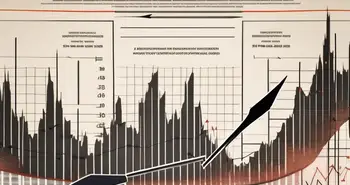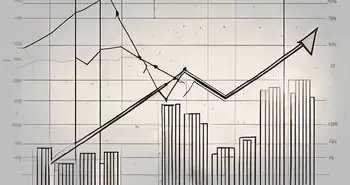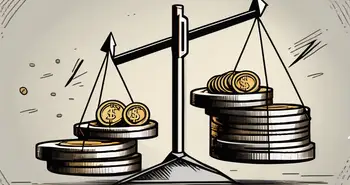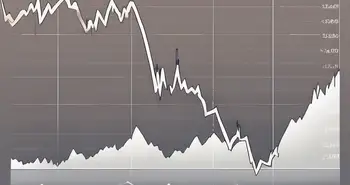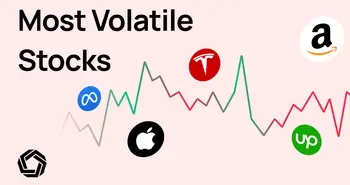Analyzing the Impact of Tesla’s Stock Splits on Market Performance
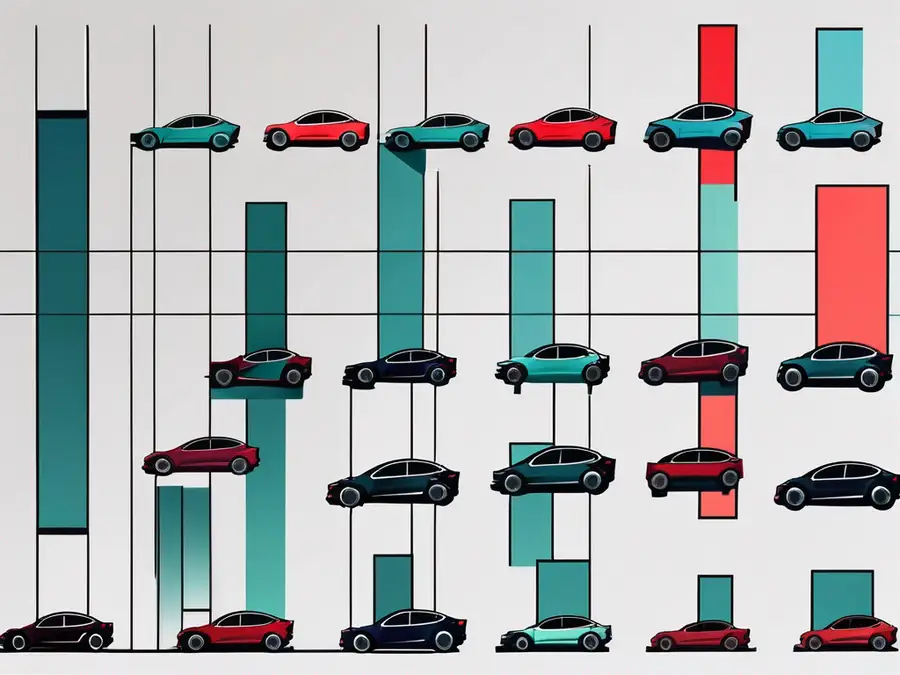
Tesla's stock splits have been the talk of the market in recent years. As a seasoned investor and expert in the field, I am constantly analyzing market data to understand the impact of these splits on Tesla's overall performance. In this article, I will take you through the journey of Tesla's stock splits, their rationale, their impact on the market, comparisons with other major companies, and future predictions.
Understanding Stock Splits: A Brief Overview
Before diving into Tesla's specific case, let's start with a brief overview of what stock splits are. A stock split is a corporate action where a company divides its existing shares into multiple shares. The primary objective is to increase the number of shares traded in the market, making them more accessible to a broader range of investors.
Stock splits are typically announced by companies when their stock price becomes too high. By splitting the shares, the company can bring down the individual share price, making it more affordable for retail investors.
What is a Stock Split?
A stock split is a method used by companies to increase the number of shares outstanding while maintaining the same market capitalization. For example, in a 2-for-1 stock split, each existing shareholder would receive an additional share for every share they own, effectively doubling their total number of shares.
Let's say an investor owns 100 shares of Tesla, and they announce a 2-for-1 stock split. After the split, the investor would own 200 shares, but the price per share would be halved. The total value of their investment remains unchanged.
The Rationale Behind Stock Splits
Stock splits serve various purposes and can be seen as a positive signal by investors. One of the primary reasons companies split their stock is to increase liquidity and attract a broader retail investor base. By reducing the price per share, the stock becomes more affordable and enticing to individual investors.
Furthermore, stock splits can create a psychological effect on investors. Lower share prices are often perceived as more accessible and less risky, which can generate increased demand for the stock.
Tesla's Journey Through Stock Splits
Tesla's first foray into stock splits occurred in 2020, introducing a 5-for-1 split. This historical move made Tesla shares more accessible to retail investors and propelled the stock to new heights. The split was met with considerable enthusiasm from the market, driving up demand and pushing the stock price even higher.
Tesla's First Stock Split: A Historical Perspective
When Tesla announced its first stock split in August 2020, the market responded with great anticipation. Investors saw this as an opportunity to acquire more Tesla shares at a lower price, reinforcing the stock's popularity. Following the split, Tesla's stock performance soared, and the company became the most valuable automaker in the world, surpassing giants like Toyota and Volkswagen.
The Impact of Tesla's Subsequent Stock Splits
Building on the success of their first split, Tesla announced subsequent stock splits in 2021, further enhancing accessibility for investors. However, it's important to note that while stock splits generate excitement and temporarily impact the stock price, they do not fundamentally change a company's underlying value or long-term prospects.
Instead, the true measure of Tesla's success lies in its ability to deliver innovative products, expand market reach, and maintain profitability. The stock splits serve as a testament to Tesla's position as a market leader, but investors should always evaluate the company based on its overall performance and future growth potential.
The Market Response to Tesla's Stock Splits
Tesla's stock splits undoubtedly have an immediate impact on the market. Let's delve deeper into the market reactions to these splits and their long-term implications.
Immediate Market Reactions to Tesla's Stock Splits
Following Tesla's stock splits, the market experiences a surge in trading volume as retail investors rush to take advantage of the lower share price. This influx of investors can create a temporary increase in demand, causing the stock price to spike.
However, it's essential to distinguish between short-term market movements and long-term performance. While the immediate market reactions are exciting, investors should focus on the underlying business fundamentals, as these determine the true value of a company.
Long-term Market Performance Post Tesla's Stock Splits
When examining Tesla's long-term market performance after its stock splits, we find a mixed bag of results. While there is no denying that Tesla's stock has enjoyed significant growth over the years, it's crucial to acknowledge the influence of various factors beyond stock splits.
Tesla's market performance has been shaped by its ability to innovate in the electric vehicle industry, its production capabilities, and market sentiment towards sustainable energy. While stock splits can contribute to short-term momentum, it's the company's performance and visionary leadership that propel it forward in the long run.
Comparing Tesla's Stock Splits with Other Major Companies
Comparing Tesla's stock splits with those of other major companies provides valuable insights into their strategies and market impacts.
Tesla vs. Apple: A Comparative Analysis
When comparing Tesla's stock splits with those of Apple, we observe distinct differences in their approaches. Apple, one of the largest technology companies globally, has also engaged in stock splits to enhance accessibility and increase retail investor participation.
Both Tesla and Apple have experienced significant growth in their stock prices, driven by strong market demand and technological innovation. However, while Tesla's stock splits have generated considerable market buzz, Apple's stock splits have been seen as more routine and expected in the market.
Tesla and Amazon: Differing Market Impacts
Tesla's stock splits have garnered attention due to the company's explosive growth and charismatic CEO, Elon Musk. In contrast, Amazon, led by Jeff Bezos, has not engaged in stock splits, choosing a different path to navigate the market. Amazon's stock has seen remarkable long-term growth without the need for stock splits.
While Tesla's stock splits draw interest from both retail and institutional investors, Amazon's decision to maintain a higher share price signals a unique market approach. Each company's strategy reflects its individual growth trajectory and market positioning.
The Future of Tesla's Stock Splits
As an expert in the field, I am often asked about the potential impact of future stock splits on Tesla's market performance. While I cannot predict the future with certainty, we can explore some potential scenarios based on past patterns and market dynamics.
Predicting the Impact of Potential Future Stock Splits
If Tesla were to announce additional stock splits in the future, we can expect similar patterns observed in the previous splits. Retail investors would likely view this as an opportunity to acquire more shares at a lower price, potentially driving up demand and short-term market excitement.
However, it's crucial to remain grounded and consider the broader market and Tesla's fundamentals. Stock splits alone should not be the sole basis for investment decisions. Investors should carefully analyze Tesla's growth strategy, competitive landscape, and evolving market dynamics to make informed decisions.
The Role of Stock Splits in Tesla's Growth Strategy
Stock splits play a role in Tesla's growth strategy by increasing accessibility and expanding its investor base. By making the shares more affordable, Tesla can attract a wider range of investors who believe in the company's future prospects.
As Tesla continues to innovate in the electric vehicle and sustainable energy sectors, future stock splits may be utilized strategically to maintain market momentum and broaden ownership. However, it's important to note that stock splits alone do not guarantee success. Tesla's progress will be determined by its ability to navigate industry trends, deliver innovative products, and execute its long-term vision.
FAQ
What is a stock split?
A stock split is a corporate action where a company divides its existing shares into multiple shares. The primary objective is to increase the number of shares traded in the market, making them more accessible to a broader range of investors.
Why do companies engage in stock splits?
Companies engage in stock splits to increase liquidity, attract retail investors, and create a psychological effect on existing and potential shareholders. By reducing the price per share, stock splits can make the shares more affordable and perceived as less risky.
How did Tesla's stock splits impact the market?
Tesla's stock splits generated significant market enthusiasm, driving up demand and temporarily impacting the stock price. While stock splits contribute to short-term momentum, the company's long-term success depends on its ability to deliver innovative products, expand market reach, and maintain profitability.
How do Tesla's stock splits compare to those of other major companies?
Tesla's stock splits have garnered attention due to the company's explosive growth and charismatic CEO, Elon Musk. Comparatively, companies like Apple have also engaged in stock splits, albeit with different market impacts. Each company's approach reflects its individual growth trajectory and market positioning.
What can we expect from Tesla's future stock splits?
If Tesla were to announce future stock splits, we can expect a similar pattern of increased demand and market excitement. However, investors should base their decisions on an analysis of the company's growth strategy, competitive landscape, and evolving market dynamics, rather than stock splits alone.
And that concludes my analysis of the impact of Tesla's stock splits on market performance. As an expert in the field, I encourage investors to consider multiple factors when evaluating the performance of a company and to make informed decisions based on careful analysis rather than short-term market trends.
As you consider the implications of Tesla's stock splits and the broader investment landscape, Morpher invites you to experience a new era of trading. Embrace the power of blockchain technology and join a platform where innovation meets investing. With Morpher, you can trade Tesla shares alongside a diverse range of assets, from cryptocurrencies to unique markets, all with zero fees, infinite liquidity, and the flexibility of fractional investing. Sign up now to take control of your investment journey with the Morpher Wallet, and enjoy the benefits of 10x leverage to amplify your trades. Don't miss out on this transformative trading experience. Sign Up and Get Your Free Sign Up Bonus today, and be part of the future of investing with Morpher.

Disclaimer: All investments involve risk, and the past performance of a security, industry, sector, market, financial product, trading strategy, or individual’s trading does not guarantee future results or returns. Investors are fully responsible for any investment decisions they make. Such decisions should be based solely on an evaluation of their financial circumstances, investment objectives, risk tolerance, and liquidity needs. This post does not constitute investment advice.

Painless trading for everyone
Hundreds of markets all in one place - Apple, Bitcoin, Gold, Watches, NFTs, Sneakers and so much more.

Painless trading for everyone
Hundreds of markets all in one place - Apple, Bitcoin, Gold, Watches, NFTs, Sneakers and so much more.

